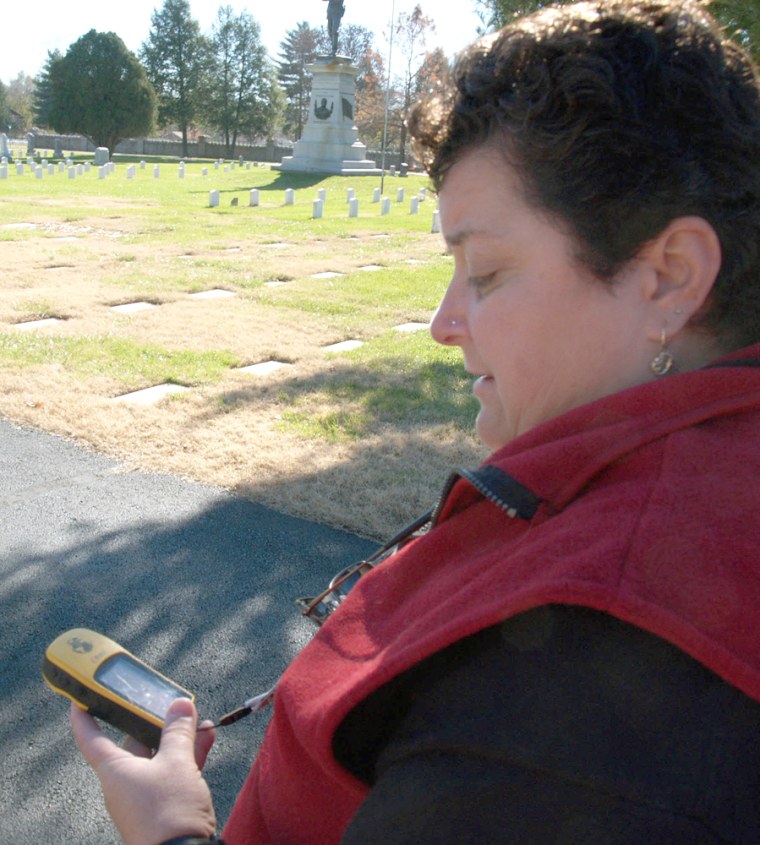This could be the three-letter answer for that last tough gift problem: GPS -- a global positioning system.
A high-tech gadget that appeals to the inner nerd, it also prompts the user to get off the couch and into the great outdoors. A GPS gadget can be a catalyst for family outings, but also a hip present for teens who want no part of parents and siblings. It’s even, potentially, educational.
That's because these hand-held navigation systems are not just helpful for finding the way from point A to B but an entrée into the world of 21st century treasure hunting, known as geocaching.
At one time limited to technology buffs, the appeal of geocaching has widened with the availability of cheaper, more easy to use GPS devices.
"I get e-mail from people saying they’ve reconnected with their kids, they've lost weight, that they are getting more exercise," says Jeremy Irish, founder of the Web site geocaching.com. "The idea is that technology doesn’t mean you have to be chained to your entertainment system at home."
GPS, ammo box, logbook
The basic outline is this: One person creates a geocache by putting some trinkets and a logbook into a container, often a metal ammunition box, which they hide in a public place such as a park, highway overpass or wilderness area.
The cache creator then posts the precise coordinates of the hiding place on a Web site where other GPS users can see them, enter them into their GPS device and try to track the spot down. The creator may also post useful hints, such as "watch out for wasps!" or "must have boat to access."
Upon finding a geocache -- and it often takes some doing, even with GPS -- the seeker takes a trinket from the cache, adds an item of his or her own -- and records the experience in the logbook that stays in the cache.
The first cache in May 2000 was intended to celebrate the Clinton administration's lifting of the ban on super accurate GPS technology for nonmilitary uses. David Ulmer hid a cache near Portland, Ore., posted the coordinates on a bulletin board of GPS users and challenged them to find it. Now, four and a half years later, Ulmer is dubbed the "grandfather of geocaching."
Since then, the geocache concept has exploded. One central repository of treasure hunts, geocaching.com, lists 133,396 active caches in 212 countries. In the last week alone, the site has tallied 51,294 new logs written by 11,160 account holders. And that's just the people who came back to report their experiences online.
"The growth has been phenomenal," says Irish. "Every year we have to update our hardware, just to make sure the site keeps functioning."
While the sport is still centered in the Pacific Northwest, caches can be found everywhere from New York's Central Park to the Buddhist ruins of Pagan, in Myanmar.
One cache named "Ghar" (found at coordinates N 34° 34.921 E 069° 19.454) has a five-star difficulty rating for terrain. That's because it's under some rocks at the base of a flagpole, in Bagram, Afghanistan. The accompanying note warns: "Areas off path may be mined."
New users, new variations
Geocaching is spawning new variations by the day. A few examples:
- Multi-stage caches: As in a traditional treasure hunt, each cache includes clues or coordinates to lead seekers to the next one.
- Virtual caches: Coordinates lead seekers not to treasures, but to a point of interest, like a historical site or interesting view.
- Event caches: The listings have a time element -- prompting seekers to converge on a given place at a specified time, for a designated activity -- such as a picnic on a mountain meadow.
- Micro-caches: Tiny containers with tiny logbooks and no other goodies, that can be attached, say, to the underside of a park bench or a fence. They serve better in an urban setting where an ammunition box would be conspicuous (or alarming).
- Game pieces: For geocachers with a competitive streak, they can place in the cache items with a particular goal. For instance, two brothers in Illinois are racing pieces called "travel bugs" to Seattle. Other geocachers who come across the travel bugs are asked to help by putting the bug in another geocache closer to its destination.
The geocache demographic is evolving too, says Irish. While many geocachers are young parents and their kids, he says retirees traveling in RVs seem to be getting in on the action lately.
More and cheaper gadgets
Meanwhile, in U.S. schools, federal grants support some school programs using geocaching to teach kids aspects of geography and math. Irish's company, Groundspeak, which owns geocaching.com, has also teamed up with another Seattle company to offer geocaching events as an option for corporate team-building.
While geocaching is good clean fun, it is not yet cheap: a hand-held GPS device still costs about $100 at the low end and several hundred dollars with additional bells and whistles.
For those who are waiting for a cheaper version, it's on the horizon. Cell phone service providers are working towards providing GPS, under a federal mandate intended to allow emergency responders to locate people who dial 911. So far, says Irish, Nextel is the only provider that offers the service.
Nintendo and Sony are also coming out with new hand-held gaming devices that will have GPS attachments.
